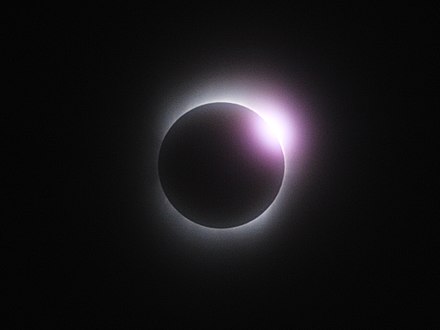The 2017 total solar eclipse has scientists and non-scientists alike marveling at the beauty and mystery of the scientific occurrence.
The eclipse is causing many to flock to Nashville to witness the big event this Monday, so Lipscomb physics professor Alan Bradshaw discussed some of the biggest and most interesting scientific features of the eclipse to be on the lookout for.
Dr. Bradshaw noted that there are several key things to look for when viewing the eclipse, such as the “snakes on the ground” phenomenon, Baily’s Beads and the Diamond Ring phenomenon. He also gave a brief synopsis of what a total eclipse is, which can be either solar or lunar. This eclipse, of course, is a solar eclipse.
“An eclipse in general is actually when anybody moves in between a body that gives light to the earth and blocks out the light,” Bradshaw said. “A solar eclipse is where the moon moves in between the sun and the earth, and so we are having a total solar eclipse, where the moon is actually close enough to the earth that it’s going to be completely blocking the sun’s rays in a portion of the United States for a couple minutes.
“There are also partial eclipses where the moon doesn’t completely block the sun’s light,” Bradshaw noted. “Those are much more common, but we get to be in the path of totality here in Nashville.”
Snakes on the Ground (Shadow Bands) phenomenon
The “snakes on the ground” phenomenon is apparently so distinct that, according to NASA’s total eclipse site, English astronomer royal George B. Airy recorded his recollection of the snakes on the ground after witnessing his first total solar eclipse in 1842: “As the totality approached, a strange fluctuation of light was seen upon the walls and the ground, so striking that in some places children ran after it and tried to catch it with their hands.”
“As the partial eclipse happens, you can’t look directly at it, because the sun is still shining, so it’s dangerous to your eyesight to view it,” Bradshaw said. “One of the ways is with eclipse glasses, and the other is a way called the pinhole camera, which is where you poke a hold in a cardboard box, and on the other side of the cardboard, you’ll be able to see an image of the sun as the eclipse happens.
“That’s essentially what’s happening as you near the totality phase of the eclipse; the little bands of light that are coming through as the shadow of the moon begins to completely eclipse the sun and cast lots of different shadows on the ground — basically looks like lots of little snakes moving around on the ground. That appears just before the eclipse because you have the little slivers of light, and then just after the eclipse, you have the little slivers of light.”
Baily’s Beads
Baily’s Beads occur because of the moon’s irregular surface, made up of mountains and valleys, thus the light streaming from the sun is broken and resembles beads to to viewers. The phenomenon is named for Sir Francis Baily, an English astronomer.
“As the moon is sort of approaching totality, and you’ve got a very small source of light, and it’s not quite blocking the sun, that’s where the line of sunlight will appear like individual beads, and that’s probably because of the way the atmosphere sort of acts as a lens for the sun and focuses it in,” Bradshaw said.
Diamond Ring phenomenon
The Diamond Ring phenomenon occurs as the moon slowly begins to cover the sun, until only one bead is left, causing it to look as if there is an astronomically large diamond ring in the sky.
“Just before the moon completely eclipses the sun, there’s this one little shaft of sunlight left, and it can look like you’ve got a ring with just this one brilliant piece that kind of resembles a diamond ring,” Bradshaw said, adding, “And then the diamond ring will turn 180 degrees as totality ends.”
Dr. Bradshaw said he expects to provide his physics students with an eclipse-related lab lesson later in the week, but he will definitely be joining the rest of campus out on the quad during the eclipse.
No rain is in the forecast for Monday in Nashville, with clear skies and sunny weather predicted. Those in the Nashville area viewing the total solar eclipse will likely experience a temperature drop during totality.
Totality in Nashville will begin at approximately 1:27 p.m. and last nearly two minutes.
Make sure to check back with Lumination for live total solar eclipse coverage throughout Monday, August 21.

